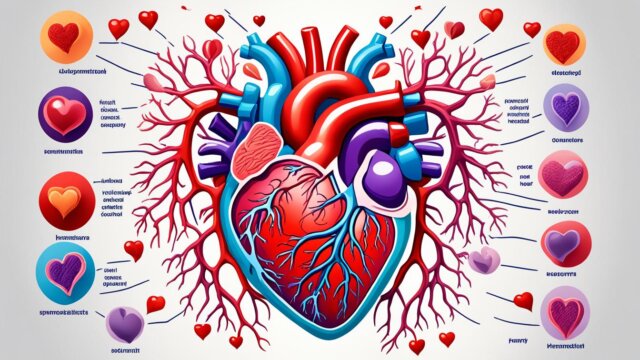FTC disclaimer: This post may contains affiliate links and we will be compensated if you click on a link and make a purchase.
A huge 60% of patients really get what their cancer care is about from oncologists. This shows how important these doctors are in helping patients through chemotherapy. Chemotherapy is a key part of many cancer treatments. It uses drugs to kill cancer cells, giving hope to millions of people fighting this tough disease.
This guide will help you better understand chemotherapy. You’ll learn about the science behind it, why doctors prescribe it, and what to expect during treatment. We want to give you the knowledge you need so that you can make better choices about your care and have a more positive treatment experience.
Key Takeaways
- Chemotherapy is a widely used cancer treatment that utilizes a range of drugs to target and eliminate cancer cells.
- Oncologists play a crucial role in guiding patients through the complexities of chemotherapy, with 60% of patients best understanding their goals of care from these medical professionals.
- This guide will provide a comprehensive understanding of how chemotherapy works, why it is prescribed, and what to expect during treatment.
- Empowering patients with knowledge can lead to more informed decision-making and a more positive treatment experience.
- The article will also cover the role of other cancer treatments, such as targeted therapy, immunotherapy, and biotherapy, in the overall cancer treatment plan.
What is Cancer?
Cancer is a disease in which cells grow and spread without control. These cancer cells can form tumors, which can be either benign (non-cancerous) or malignant (cancerous).
How Cancer Starts
Cancer starts with genetic changes that cause cells to grow too much. This creates a primary tumor, which can then spread to other parts of the body.
How Cancer Spreads
The spread of cancer to other parts is called metastasis. Cancer cells can travel through the body and form new tumors. This makes the cancer harder to treat.
Benign Tumors | Malignant Tumors |
|---|---|
Grow slowly and do not spread | Grow rapidly and can spread to other parts of the body |
Generally do not invade nearby tissues | Invade and damage nearby tissues |
Rarely life-threatening | Can be life-threatening if not treated |
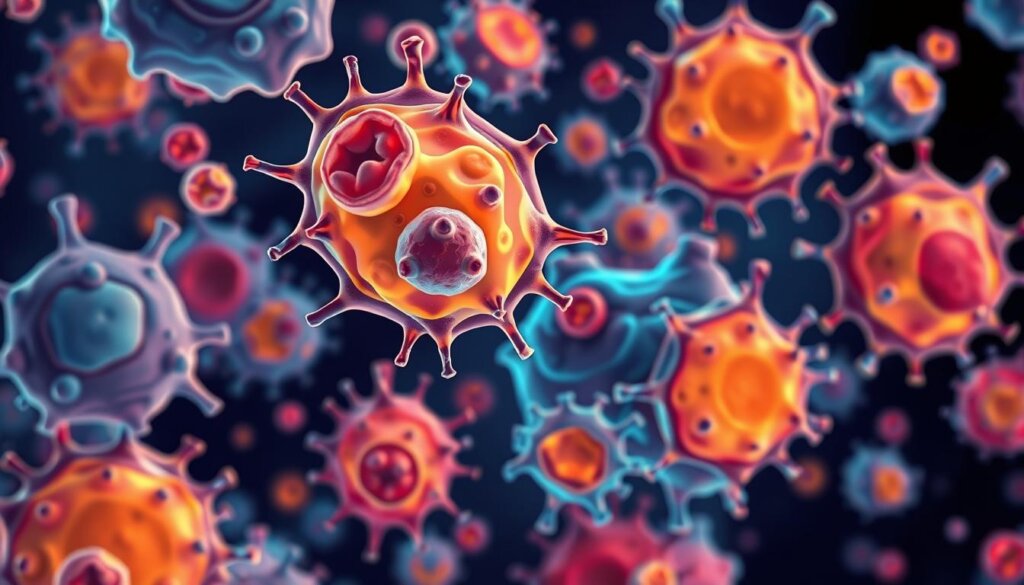
“Cancer is a group of diseases involving abnormal cell growth with the potential to invade or spread to other parts of the body.”
Knowing the difference between benign and malignant tumors is key. Malignant tumors are more dangerous because they can spread. Benign tumors usually don’t.
Chemotherapy is used to fight cancer cells and tumor growth. It’s often used alone or with other treatments.
How Cancer is Treated
Cancer treatment often uses surgery, radiation, and drug therapies like chemotherapy and immunotherapy. The treatment plan depends on the cancer type, stage, and the patient’s health.
Types of Cancer Treatments
Surgery is a common first treatment for many cancers. Radiation therapy uses energy beams to treat cancer. Chemotherapy kills cancer cells that have spread.
Targeted therapy and immunotherapy target cancer cells to kill them. Hormone therapy blocks hormones that fuel some cancers. Other treatments include bone marrow transplant and radiofrequency ablation.
Chemotherapy aims to cure, prevent recurrence, or slow cancer growth. It can be given orally, IV, by injection, or topically.
Doctors check how well chemotherapy works with regular visits and tests. The effects can vary based on the treatment, dosage, and how the body reacts.
Many patients also get surgery, radiation, or other therapies. The best treatment depends on the cancer type, stage, and the patient’s health.
Clinical trials offer new treatments but with unknown side effects. Mayo Clinic hospitals are among the top cancer hospitals in the nation.

In summary, cancer treatment combines therapies tailored to each patient. Knowing about treatment options and their effects helps patients make informed choices.
Your Treatment Plan
Every cancer treatment is different. It depends on the cancer type, stage, and the patient’s health. It also considers the patient’s age and what they prefer. Treatments can be one thing or a mix, and new trials might be an option.
Choosing a treatment is a team effort. The team includes doctors, nurses, and more. It’s key for patients to know how the team works together.
Planning treatment means figuring out the right doses and how long they last. Scheduling treatments is about when and how they are given. The plan’s complexity depends on the treatment type. Doctors use research to guide their decisions.
Having a written treatment plan is a good idea. It should cover the diagnosis, treatment, side effects, and more. Treatment schedules outline what treatments are needed, how often, and for how long. Any changes can affect the outcome, so talking to the team is crucial.
When planning breaks, work, family, and travel plans should be considered. Patients can work with their healthcare team to develop a treatment plan that works for them.
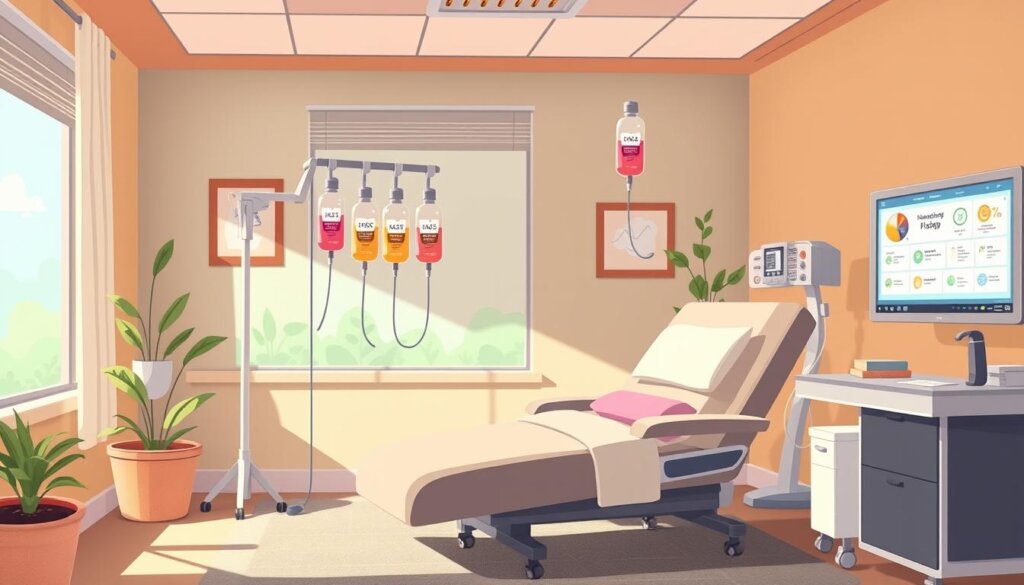
Treatment Decision Factors | Explanation |
|---|---|
Cancer Type and Stage | The specific type and stage of cancer will heavily influence the recommended treatment plan. |
Patient’s General Health | The patient’s overall physical condition, age, and other health factors will be considered. |
Patient’s Personal Preferences | The patient’s goals, values, and lifestyle will be taken into account when deciding the treatment approach. |
Clinical Trial Eligibility | Patients may have the opportunity to participate in clinical trials of new cancer treatments. |
“Treatment planning and scheduling are critical components of personalized cancer care. By working closely with their healthcare providers, patients can play an active role in shaping their treatment plan and improving their outcomes.”
What is Chemotherapy?
Chemotherapy is a drug therapy that kills cancer cells or slows their growth. It targets cells that grow fast, like cancer cells, to stop their growth. Depending on the case, chemotherapy aims to cure, control, or ease symptoms of cancer.
How Chemotherapy Works
The beginning of modern cancer treatment began with X-rays, animal tumor models, and Halsted’s surgery. Over time, many drug types were added, like alkylating agents and anthracyclines. Each type attacks cancer cells in its own way.
Why Have Chemotherapy?
Chemotherapy is a common cancer treatment. Different medicines fight cancer in different ways. Often, a mix of medicines is used for some cancers.
Chemotherapy is used for many reasons. It can be before or after surgery, when cancer spreads, or to help with symptoms.
Chemotherapy Drug Class | Examples | Mechanism of Action |
|---|---|---|
Alkylating Agents | Cisplatin, Cyclophosphamide, Dacarbazine | Inhibit DNA replication and transcription |
Antimetabolites | Methotrexate, Gemcitabine, Capecitabine | Prevent DNA replication |
Topoisomerase Inhibitors | Etoposide, Irinotecan | Prevent DNA from copying itself |
Mitotic Inhibitors | Paclitaxel, Vincristine | Interfere with cell division |
Antitumor Antibiotics | Daunorubicin, Doxorubicin | Prevent DNA inside cancer cells from copying itself |
Chemotherapy harms cancer cells’ growth and spread. It can be given in many ways, like orally or through injections. It’s given in cycles to protect healthy cells.

In summary, chemotherapy is key in fighting cancer. It uses many medicines to kill cancer cells. Chemotherapy keeps getting better, with new ways to fight cancer. It’s a crucial tool in the battle against cancer.
Administration of Chemotherapy
Chemotherapy is a key part of cancer treatment. It can be given in different ways to reach the patient’s body. The most common methods are IV injections or infusions and oral tablets or capsules.
But there are other ways, too. These include intramuscular and subcutaneous injections, topical creams, and direct injections into body cavities or the spinal canal.
How is Chemotherapy Given?
Intravenous (IV) chemotherapy is very common. It sends drugs straight into the bloodstream through tubing. This can be a quick shot or a slow drip from a bag, or even a continuous flow for days.
Central venous catheters, like ports or PICC lines, are often used. They make getting drugs easier and avoid many needle sticks.
Other methods include intrathecal and intra-arterial chemotherapy. Intrathecal chemotherapy goes into the spinal canal for nervous system cancers, while intra-arterial chemotherapy targets the main artery to the tumor for more focused treatment.
Intracavitary and intravesical chemotherapy use catheters to reach areas like the bladder or chest.
How Long Will Treatment Take?
The length and frequency of chemotherapy depend on the cancer type, drugs used, and how well the body responds. It’s given in cycles, with treatment days followed by rest.
These cycles can last from minutes to days. The whole treatment can go on for weeks or months.
How fast the body gets rid of the drugs also changes. It depends on the drug type and the person’s health. Some patients might eat light before treatment, and treatment centers might let them eat during longer sessions to manage side effects.
Chemotherapy Cycles and Schedules
Chemotherapy is a key part in fighting cancer. It’s important to understand the details of chemotherapy cycles and schedules. Chemotherapy drugs can be given alone or with other treatments like radiation or targeted therapy. It’s used to treat many cancers and may be part of a stem cell transplant.
Most chemotherapy drugs are given through an IV, but there are other methods, such as oral, intrathecal, and topical chemotherapy. The treatment plan includes cycles and rest periods. The length and number of cycles depend on the cancer and drugs used. Plans are made for each person, considering their cancer, age, health, and preferences.
Chemotherapy treatment can last 3 months or more and includes 4 or more cycles. Before starting, the team may suggest dental check-ups and echocardiograms. Chemotherapy can affect fertility, and patients may talk about preserving fertility with their team. Treatments can be done at a clinic, hospital, or even at home. Handling chemotherapy drugs safely is very important.
Chemotherapy Drug Class | Examples | Mechanism of Action |
|---|---|---|
Alkylating agents | Cyclophosphamide, Carboplatin | Damage DNA to prevent cell division |
Nitrosoureas | Carmustine, Streptozocin | Effective for some brain cancers |
Antimetabolites | Methotrexate, Gemcitabine | Stop cells from making DNA for new cancer cells |
Topoisomerase inhibitors | Irinotecan, Topotecan | Stop a protein called topoisomerase from working, preventing cancer cells from multiplying. |
Mitotic inhibitors | Paclitaxel, Vinblastine | Stop cells from multiplying through a process called mitosis |
Antitumor antibiotics | Doxorubicin, Bleomycin | Stop cells from copying their DNA, preventing them from multiplying |
Other chemotherapy drugs | Arsenic trioxide, Eribulin | Helpful for treating cancer and do not fit in the above categories |
Combination chemotherapy is used to make treatment more effective and lower drug resistance. The choice of drugs depends on the cancer type, stage, and the patient’s health. It’s used to cure, stop cancer spread, ease symptoms, or shrink tumors. It’s often used with surgery, radiation, hormone, immunotherapy, and biological therapy for better results.
Chemotherapy may be used before or after other treatments to shrink tumors or destroy cancer cells. The treatment length and frequency depend on the cancer type, treatment goals, and how well the patient responds. Sessions can be daily, weekly, or monthly, with periods of treatment followed by rest. Drugs are metabolized by the kidneys and liver and excreted through urine or feces, varying elimination time based on the drug type and individual health.
Before starting chemotherapy, patients should undergo medical tests and discuss side effects with their doctor. They should consider medical devices, visit the dentist, plan for work and home responsibilities, and verify insurance coverage for a smooth treatment process.
- A single course of chemotherapy typically involves four to eight chemotherapy cycles.
- The standard duration for a chemotherapy treatment is between 3 to 6 months.
- Chemotherapy drugs can remain in the body for different periods: Fluorouracil – 3 to 6 hours, Cisplatin – 24 hours, Doxorubicin – about 5 days.
- Factors determining the length of chemotherapy treatment include the type of cancer and its stage, the prescribed chemotherapy medications, the cancer’s response to the medications, and the severity of side effects.
- Oral chemotherapy, topical chemotherapy, and injectable/IV chemotherapy are common methods of administering chemotherapy medications.
- Chemotherapy drugs fall into different classes: Alkylating agents, Antimetabolites, Anti-tumor antibiotics, Topoisomerase inhibitors, and Mitotic inhibitors.
- Chemotherapy can cause side effects such as fatigue, hair loss, nausea, vomiting, weight changes, constipation/diarrhea, sores, infections, anemia, and bruising/bleeding easily.
- A doctor determines the structure and length of a person’s chemotherapy cycles to effectively target cancer cells and allow the body to regenerate healthy cells.
- Medical professionals classify chemotherapy medications based on their chemical structure and how they function to treat cancer cells.
Health Professionals Involved
When you get chemotherapy, you work with a special team. This team includes a medical oncologist and a radiation oncologist, who plan your treatment.
Nurses are key in this team. They talk to you a lot. Nurse practitioners help with your main care.
Pharmacists give you drug info. They tell you how to use your meds and what side effects to watch for. Social workers help with emotional and physical issues. They also find you support services.
There are more people on your team. Dietitians help with eating problems. Psychologists or counselors give emotional support. Patient navigators help you through the whole system.
This team shows how complex cancer care is. They work together to help you. They take care of your medical, emotional, and practical needs.
Health Care Setting | Percentage of ONS Members |
|---|---|
Hospital/Multihospital System | 43% |
Outpatient/Ambulatory Care | 24% |
Physician Offices | 11% |
Hospice or Home Care | 3% |
More people get chemotherapy outside the hospital, which means they need to learn more about their treatment. The Oncology Nursing Society (ONS) offers a course on this.
Making Treatment Decisions
Choosing the right cancer treatment, like chemotherapy, is a team effort. You and your healthcare team work together. Understanding the treatment options, their benefits and risks, and what you want is important.
Your treatment plan is made just for you. It considers your cancer type, stage, and health. You might also get to try new treatments like immunotherapy.
It’s key to make decisions together. You, your doctors, and your caregivers should all agree on the best treatment for you. Getting a second opinion is also a good idea. It can give you more information and better care.
Shared Decision-Making in Cancer Care | Percentage |
|---|---|
Patients perceived they were offered treatment choices | 51% |
Patients who thought options were presented equally | 48% |
Patients who were less passive in decision-making when offered choices | 96% |
Patients who were more satisfied in decision-making when offered choices | 100% |
Healthy Canadians and those with health problems reporting involvement in treatment choices | 62% and 56% |
Being involved in treatment decisions can improve your health and quality of life. Tools like decision aids can help you understand your choices better, but they are not often used in hospitals.
Choosing treatment is a big and personal decision. By working with your team and considering the pros and cons, you can feel in control of your cancer journey.
Side Effects of Chemotherapy
Chemotherapy is key in fighting cancer but can also cause side effects. These side effects happen because chemotherapy drugs target both cancer cells and healthy cells. Knowing and managing these side effects is vital for those getting chemotherapy.
Understanding Side Effects
Common side effects of chemotherapy include:
- Fatigue: Feeling very tired is a common side effect of chemotherapy.
- Hair Loss: Some people lose their hair due to chemotherapy, but not everyone.
- Infection Risk: Chemotherapy weakens your immune system, making you more prone to serious infections.
- Anemia: It can lower your red blood cells, leading to anemia.
- Bleeding and Bruising: It can cause your skin to bruise easily and lead to bleeding issues.
- Mouth Problems: Chemotherapy can make your mouth sore and irritated, known as mucositis.
- Cognitive Changes: You might have memory and concentration problems during treatment.
- Sleep Disturbances: Some people have trouble sleeping or experience insomnia.
- Fertility Issues: Chemotherapy can affect fertility in both men and women.
Managing Side Effects
Patients can work with their healthcare team to manage chemotherapy side effects. They can use medications, self-care strategies, and supportive care to lessen these effects. This improves their quality of life during treatment.
Patients should talk to their medical team about any concerns or symptoms. They can offer guidance and make changes to the treatment plan to reduce side effects.
“The complexity of side effects is depicted in a manner suitable for patients to comprehend and highlights the importance of communication between patients and healthcare providers regarding the management of these effects.”
Patients can focus on their health and well-being during treatment by understanding and managing chemotherapy side effects.
Targeted Therapy, Immunotherapy and Biotherapy
Cancer patients now have new treatment options like targeted therapy, immunotherapy, and biotherapy. These methods are different from traditional chemotherapy. They target specific parts of cancer cells or use the body’s immune system to fight cancer.
Targeted therapy focuses on proteins that control cancer cell growth. It’s a key part of precision medicine. Most targeted therapies are drugs or antibodies that target cancer proteins. For some cancers, like chronic myelogenous leukemia (CML), drugs can specifically target the cancer.
Biomarker testing is important to see if a patient’s cancer can be treated with targeted therapy. Targeted therapies work by stopping tumor growth, helping the immune system, and more.
But, cancer cells can develop resistance to targeted therapies over time. Side effects can include diarrhea, liver problems, and skin issues.
Immunotherapy helps the immune system fight cancer, while biotherapy uses living organisms to treat cancer. These new treatments are always improving, and patients might get to try them in clinical trials.
Doctors choose the best treatment based on the cancer type, stage, and the patient’s health. Regular checks are key to see if the treatment is working.
Conclusion
Chemotherapy is a key part of cancer treatment, but it’s not the only option. By learning about chemotherapy’s overview, how it’s given, and its side effects, you can make better choices. This includes looking into cancer treatment resources and other new therapies.
Even though finding the best way to give chemotherapy is still a challenge, studies show it’s about keeping things normal. New ways to study, like combining a Randomized Controlled Trial (RCT) with a bigger study, help figure out what patients want.
There’s always support and resources to help you through cancer. You can handle the tough parts of treatment by staying informed and talking to your healthcare team. Remember, you’re not alone. There are many cancer treatment resources ready to help and guide you.
FAQ
What is cancer?
Cancer is a disease in which cells grow out of control and form tumors, which can be benign or malignant.
Benign tumors grow slowly and don’t spread, while malignant tumors can invade tissues and spread to other parts of the body.
How is cancer treated?
Cancer treatments include surgery, radiation, and drug therapies. The plan depends on the cancer type, stage, and the patient’s health.
What is chemotherapy?
Chemotherapy uses drugs to kill cancer cells. It targets cells that grow fast, like cancer cells. It aims to cure, control, or relieve symptoms.
How is chemotherapy administered?
Chemotherapy is given in different ways, like injections or pills. IV infusion is common, where drugs go through a vein. Treatment is given in cycles with breaks to recover.
What are the side effects of chemotherapy?
Chemotherapy affects healthy cells too. It can cause blood issues, nerve problems, and fatigue. It can also lead to hair loss, nausea, and skin changes.
What other cancer treatments are available besides chemotherapy?
Besides chemotherapy, there’s targeted therapy, immunotherapy, and biotherapy. These treatments target cancer cells differently. They use the body’s immune system to fight cancer.

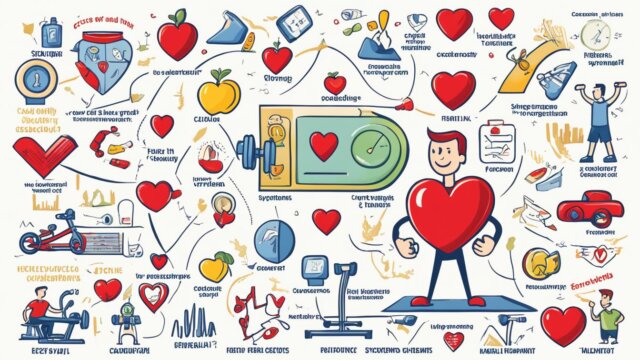
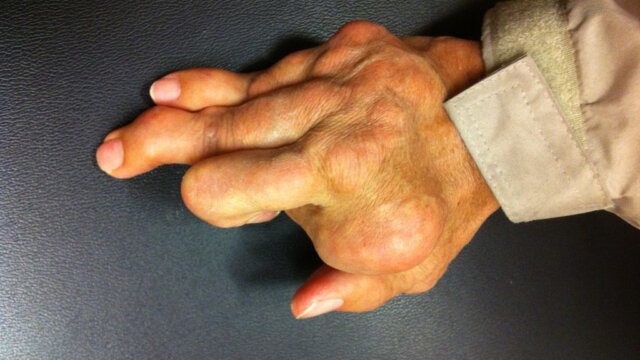



![14 Effective Home Remedies for Cough [Ultimate Guide]](https://healthyious.com/wp-content/uploads/2020/01/14-Effective-Home-Remedies-for-Cough-Ultimate-Guide-640x360.jpg)
